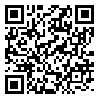Volume 9, Issue 3 (Autumn 2022)
J Prevent Med 2022, 9(3): 230-241 |
Back to browse issues page
Research code: 990559
Ethics code: IR.HUMS.REC.1399.533
Download citation:
BibTeX | RIS | EndNote | Medlars | ProCite | Reference Manager | RefWorks
Send citation to:



BibTeX | RIS | EndNote | Medlars | ProCite | Reference Manager | RefWorks
Send citation to:
Seyrafi N, Mohsseni S, Hassani L. Predicting the Preventive Health Behaviors of People Towards COVID-19 in Bandar Abbas, Iran Based on the Health Belief Model. J Prevent Med 2022; 9 (3) :230-241
URL: http://jpm.hums.ac.ir/article-1-640-en.html
URL: http://jpm.hums.ac.ir/article-1-640-en.html
1- Student Research Committee, Faculty of Health, Hormozgan University of Medical Sciences, Bandar Abbas, Iran.
2- Social Factors in Health Promotion Research Center, Hormozgan Health Research Institute, Hormozgan University of Medical Sciences, Bandar Abbas, Iran.
2- Social Factors in Health Promotion Research Center, Hormozgan Health Research Institute, Hormozgan University of Medical Sciences, Bandar Abbas, Iran.
Abstract: (1826 Views)
Objective Coronavirus disease 2019 (COVID-19) is a novel disease that caused pandemic. Due to the lack of definitive treatment, preventive behaviors are the only way to fight this disease. This study aims to determine the role of health belief model (HBM) constructs in predicting preventive behaviors against COVID-19 in Bandar Abbas, Iran.
Methods This cross-sectional study was conducted in October and November of 2020 on 351 people aged ≥18 years in Bandar Abbas, southern Iran. Sampling was done online (social media such as WhatsApp, Telegram, Twitter and Instagram) using a convenience sampling method. The data collection tool was a researcher-made questionnaire based on the HBM. The data were analyzed in SPSS software, version 21 using chi-square test, multivariate linear regression, and Pearson’s correlation test.
Results The Mean±SD age of participants was 29.11±7.19 years. Most of them (66.4%) were female. The constructs of perceived susceptibility (P=0.001), perceived severity (P=0.20), perceived benefits (P=0.001) and self-efficacy (P=0.001) could predict preventive behaviors against COVID-19. According to the Adjusted R2 value (0.674), the model predicted 67% of changes in preventive behaviors.
Conclusion The self-efficacy, perceived susceptibility, perceived severity, and perceived benefits have a role in predicting COVID-19 preventive behaviors. Attention should be given to these factors for promoting preventive behaviors during the pandemic.
Methods This cross-sectional study was conducted in October and November of 2020 on 351 people aged ≥18 years in Bandar Abbas, southern Iran. Sampling was done online (social media such as WhatsApp, Telegram, Twitter and Instagram) using a convenience sampling method. The data collection tool was a researcher-made questionnaire based on the HBM. The data were analyzed in SPSS software, version 21 using chi-square test, multivariate linear regression, and Pearson’s correlation test.
Results The Mean±SD age of participants was 29.11±7.19 years. Most of them (66.4%) were female. The constructs of perceived susceptibility (P=0.001), perceived severity (P=0.20), perceived benefits (P=0.001) and self-efficacy (P=0.001) could predict preventive behaviors against COVID-19. According to the Adjusted R2 value (0.674), the model predicted 67% of changes in preventive behaviors.
Conclusion The self-efficacy, perceived susceptibility, perceived severity, and perceived benefits have a role in predicting COVID-19 preventive behaviors. Attention should be given to these factors for promoting preventive behaviors during the pandemic.
Type of Study: Orginal |
Subject:
Health Education
Received: 2022/06/15 | Accepted: 2022/10/2 | Published: 2022/10/2
Received: 2022/06/15 | Accepted: 2022/10/2 | Published: 2022/10/2
Send email to the article author
| Rights and permissions | |
 |
This work is licensed under a Creative Commons Attribution-NonCommercial 4.0 International License. |








 hums.ac.ir
hums.ac.ir